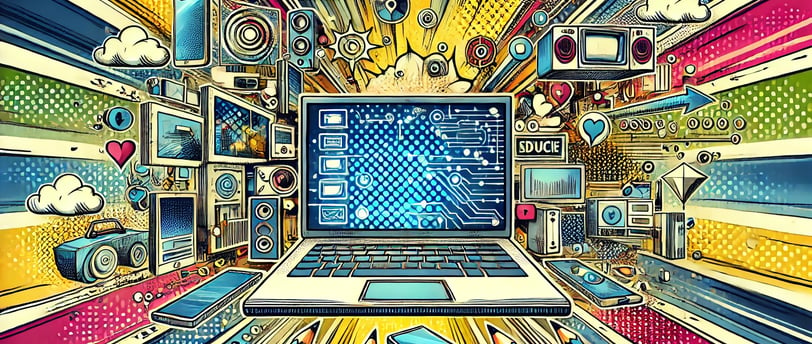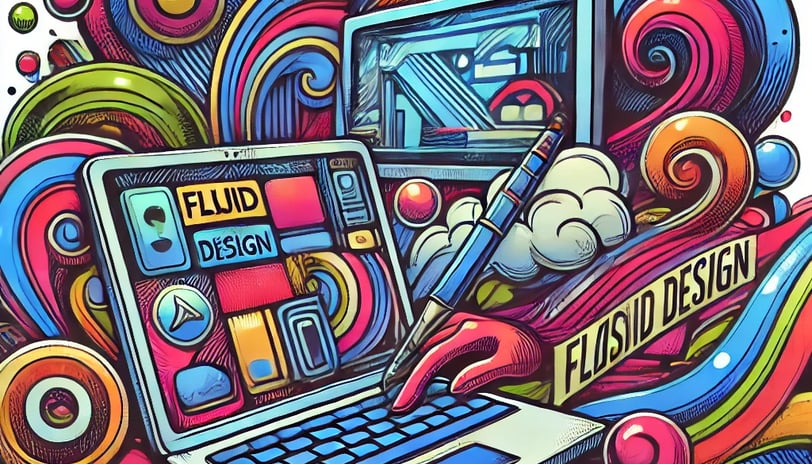The future of digital interfaces
How digital interfaces must evolve in order to become more usable and adaptable to their environment
DESIGNBUSINESSDESIGN MANAGEMENTMANAGEMENTHIRING


Interacting with computers
Since the invention of the computers, we haven't really improved the means of interaction with them. We still mostly use a mouse or trackpad. For services with touch screens, it's our fingers. This is direct interaction but it is still not as natural as it could be.
We are starting to implement voice commands but we are a far cry from something that can be used by the majority of people. For people to adopt something it has to be simple, and most of all it has to be convenient.
We are still talking about mobile vs desktop user interfaces when designing applications and websites. This in the past was a bigger mess than today. But we still have to adjust content to different screen sizes. We now use responsive design which is never perfect because of many different sizes. Companies adapt by doing a dedicated mobile version of the desktop variant. They reduce the number of actions you can do on mobile.
This all makes sense in today's dealing with interfaces. But I think this needs to change. The interactions with our devices do not take any outside influence. What I mean by that is that the context of our surroundings is important. Not only is context important for dictating what we should be able to do but how we are able to do it.
More and more people are driving cars with mobile devices in their hands. There is evidence that even talking on the phone hands-free reduces your driving abilities. let alone scrolling through your phone where your eyes are darting from phone to road and back. The car solution is to build in big ass screens for you to look at instead. It's not a solution.
Another example is being home, you are looking at a video on your phone and you decide to put it on your TV. You have to cast your screen, and for that, your TV has to be smart, etc. Even if you do manage to cast, the commands are limited, and it's not a seamless experience.
Let's say that you want to watch something on a TV but you want the sound to come out of a BT speaker. You might as well apply to be an astronaut in order to get it to run.
And I am talking about a majority of people here. You can achieve results but it won't be seamless, it will require cables and compromise.
Our interactions with computers are still evolving.
What is the next step in the evolution of interactions with computers?
I would say that we will get a new type of design. We will have something that is natural and follows your actions closely. We will have Fluid design and natural interactions.
How would that look? Well to put it simply, each screen will have the same capabilities. They will be used by touch or voice, they will have the same display capabilities and they will be connected.
What does that actually translate to? This translates to for example if you have at home a TV, Laptop, and a mobile phone. You have 3 screens. You can play your favorite game on your TV using the phone as a game controller while watching a stream on your laptop.
Another example is you invite your friends and you are all talking about this or that. Somebody says did you see this - and they pull the video from their phone onto the TV. And the TV screen does not care if your friend has an Android, iPhone, or some other device.
Another example is you driving your car and your phone locking most of the actions. Notifications etc would blast on your windshield HUD.
What I mean by Fluid interaction is you interact naturally with your devices without a need for specialized knowledge. So if you were to say to your device to your device "Remind me to buy a gift for xy before their birthday". You would have a reminder set in your phone, along with suggestions for gifts. The remainder would display on whichever screen you are currently near, be it TV, tablet, phone, watch, or car.
Technology should not chain us to the screens but rather help us achieve more and better things. When we do get to a 3D holo display that will certainly help people in ways we can't even fathom right now.


Conclusion
The evolution of digital interfaces is at a pivotal moment. It demands a significant shift toward more seamless, intuitive, and context-aware interactions. The primary methods of interacting with computers mostly touch, remain clunky and disjointed. Current solutions often involve cumbersome workarounds. They require users to adapt to technology rather than the other way around.
The future of digital interfaces lies in fluid design and natural interactions. This vision entails a world where devices work in harmony. Providing a consistent and adaptable user experience across all platforms. Imagine a home ecosystem where every screen—be it a TV, laptop, or mobile device—has the same capabilities and is interconnected. Allows users to shift effortlessly between devices without interruption or loss of functionality. In the realm of transportation, future interfaces should enhance safety and usability by recognizing context.
Ultimately, the goal is for technology to integrate naturally into our lives so that it enhances our capabilities without demanding specialized knowledge or undue attention. By embracing these principles of fluid design, digital interfaces can truly become extensions of ourselves, enabling us to interact more naturally and efficiently with the digital world.
As we move toward a future where 3D holographic displays and other innovations become reality, the potential for intuitive and immersive interactions is boundless, promising a new era of digital engagement that empowers users to achieve more with less effort.


